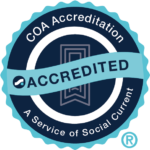What the Planning Council Does
The planning council works with the Ryan White Part A Office to identify service needs by conducting a needs assessment. This involves first finding out how many persons living with HIV are in the area through an epidemiologic profile. Usually, an epidemiologist from the local or state health department provides this information. Next, the council determines the needs of populations living with HIV and the capacity of the service system to meet those needs. This assessment of needs is done through surveys, interviews, key informant sessions, focus groups, or other methods.
The planning council uses needs assessment data and data from a number of other sources to set priorities and allocate resources. This means the members decide which services are most important to people living with HIV (priority setting) and then agree on which service categories to fund and how much funding to provide (resource allocations). In setting priorities, the planning council considers what service categories are needed to provide a comprehensive system of care for people living with HIV, without regard to who funds those services.
The planning council works with the Ryan White Part A Office in developing a written plan that defines short- and long-term goals and objectives for delivering HIV services and strengthening the system of care in Broward County. This is called a comprehensive plan in the legislation but is now called the CDC and HRSA Integrated HIV Prevention and Care Plan, including the Statewide Coordinated Statement of Need (SCSN).
The planning council is responsible for evaluating how rapidly RWHAP Part A funds are allocated and made available for care. This involves ensuring that funds are being contracted quickly and through an open process, and that providers are being paid in a timely manner. It also means reviewing whether the funds are used to pay only for services that were identified as priorities by the planning council and whether the amounts contracted for each service category are the same as the planning council’s allocations. The results of this assessment of the efficiency of the administrative mechanism are shared with the Ryan White Part A Office, who develops a response including corrective actions if needed.
The planning council is responsible for ensuring that RWHAP Part A resource allocation decisions account for and are coordinated with other funds and services. The planning tasks described earlier (needs assessment, priority setting, resource allocation, and integrated/comprehensive planning) require getting lots of input, including finding out what other sources of funding exist. This information helps avoid duplication in spending and reduce gaps in care.
Service standards guide providers in implementing funded services. They typically address the elements and expectations for service delivery, such as service components, intake and eligibility, personnel qualifications, and client rights and responsibilities. The service standards set the minimum requirements of a Ryan White Part A service and serve. Developing service standards is usually a joint activity; the Clinical Quality Management team works with the Ryan White Part A Office, planning council, providers, consumers, and experts on service categories.
The planning council may choose to evaluate how well services funded by RWHAP Part A are meeting identified community needs, or it can pay someone else to do such an evaluation. The CQM program provides information on clinical outcomes that informs the planning council about the impact of services. Planning Council members participate through the Quality Management and System of Care Committees. In addition, the planning council regularly reviews performance along the HIV care continuum. The planning council uses evaluation findings in considering ways to improve the system of care, including changing service priorities and allocations, and developing directives.



